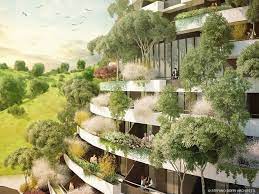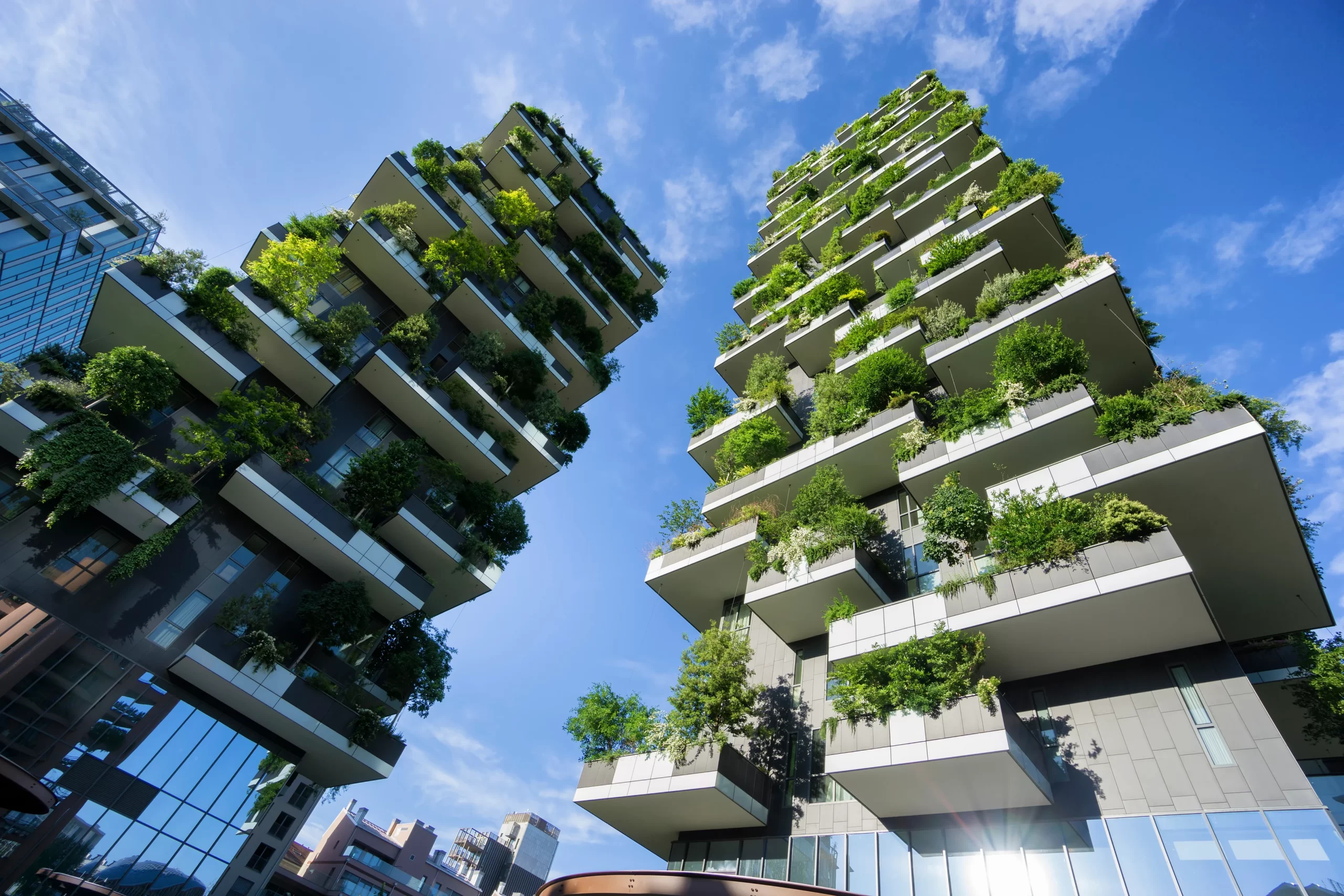Courtesy : architectureanddesign.com.au
Back in 1987, the UN-commissioned The Brundtland Report ‘Our Common Future’ described sustainable development as ‘development that meets the needs of the present without compromising the ability of future generations to meet their own needs’.
More than three decades later, this definition continues to be relevant – especially in the context of the built environment and climate change.
So what defines sustainable architecture? The simplest description would be architecture that has minimal impact on the environment through the application of appropriate design concepts, materials and technologies while also ensuring ongoing benefits for future occupants in the form of energy efficiency, comfort and well-being throughout the lifecycle of the building.
Sustainable building
Sustainable architecture, as a contemporary green building concept, may be new but it has existed in some form or the other for centuries through the use of local materials and designs that responded to local environmental conditions.
As a 20th century construct, the green building movement tentatively began in the 1970s with rising petroleum prices driving the need for more energy efficient structures as well as renewable energy alternatives. Concern for the environment, which began in the previous decade, also had an important role to play in increasing popular awareness about the impact of buildings on the ecosystem.
Sustainable architecture, as we understand it today in 2019, is not only about using the right materials and limiting the use of non-renewables and ensuring energy efficiency. A green building has to factor in every aspect of its lifecycle right from siting, design and construction, through operation, maintenance and renovation, to end-of-life when the materials can be retrieved and recycled.
Also important is the immediate environment around the building site, which needs to be preserved and protected against degradation.
Ensuring resource efficiency encompassing the use of energy, water and materials, minimising and managing waste generation onsite to avoid landfill, using recycled or recyclable materials, selecting products with minimal carbon footprint during manufacture, and localising procurement to minimise carbon miles are just one part of the sustainable building journey.
Sustainable design takes into consideration factors such as building orientation to catch the sun and winds, placement of rooms, and sizing and positioning of windows for ventilation. The materials palette is tuned to energy efficiency and low-energy use with effective application of insulation, seals, solar shading elements, low-emissivity glass, double- and triple-glazed windows, and high thermal mass building products. Passive design applies many of these principles to reduce energy consumption by as much as 40 per cent in sustainable homes.
A healthy environment is created for future occupants through the use of non-toxic paints and finishes. Material selection combines high performance with low maintenance and long-term durability, ensuring a sustainable solution.
Very importantly, the application of renewable energy systems as an alternative to fossil-fuel driven power sources as well as energy-efficient equipment, water-saving fittings, LEDs, rainwater harvesting and greywater systems, natural materials, natural lighting systems, and green roofs among others, takes buildings closer to their Net Zero energy and carbon neutral goals.
Among trends influencing the future of green architecture are recycling of spaces through renovation, rehabilitation and adaptive re-use, use of local materials as well as organic materials, energy positive and Net Zero buildings, pedestrian-friendly cities, green roofs, water-conserving building design, smart energy-saving technologies, resilient buildings built to withstand floods and storms, and invisible buildings designed to completely meld with the natural landscape.
Famous architects that have made an impact on green building architecture around the world include American architect Frank Lloyd Wright, considered as one of the founders of sustainable architecture; British architect Norman Foster; influential green architect William McDonough; Italian architect Renzo Piano; Pritzker award-winning Australian architect Glenn Murcutt; Malaysian architect Ken Yeang; and German architect Rolf Disch among many more.
Measuring sustainability in construction
The Environmental Product Declaration (EPD) provides a good indication of the environmental performance of a building product. The objective is for manufacturers to assess the impact of their manufacturing process from raw material extraction to finished product, and take corrective steps to minimise energy and water usage as well as carbon emissions.
BREEAM or Building Research Establishment Environmental Assessment Methodology is used in the United Kingdom to assess and mitigate the lifecycle impacts of buildings on the environment.
GGBC – Global Green Building Council – is a globally recognised green building rating system for practically all types of buildings.
NatHERS – Nationwide House Energy Rating Scheme – is an Australian rating system that assesses the energy efficiency of a home and rates it out of 10 stars.
The WELL Building Standard tool monitors, measures and certifies built environment features that impact human health and wellbeing.
Top 8 sustainable house designs and eco architecture
These examples prove that sustainable architecture is not only good for the planet, but it can be beautiful as well. These firms and their eco friendly projects showcase sustainable building materials, passive design techniques to control heat and light.
1.
Cape Paterson, Victoria, Australia (2017)
Clare Cousins Architects/ The Sociable Weaver
Victorian’s first 10 Star home is a display home, which is carbon positive, has a 10 Star energy rating, and is built to zero-waste and building biology principles.
2.
Sydney, NSW, Australia (2013)
Jean Nouvel/ Frasers Property and Sekisui House
The lush green landscape covers almost half of the building’s facade, creating a living environment for residents with hydroponic walls and horizontal planters. The plants function as a natural but seasonal sun control mechanism, protecting residents from harsh sunlight in summer and providing the warmth of the sun in winter.
3. Australian Islamic Centre
Melbourne, Victoria, Australia (2017)
Glenn Murcutt and Elevli Plus Architects
Based on biophilic principles, this Melbourne mosque features 96 gold-painted lanterns facing North, South, East and West directions with natural light channelled through coloured glass into the main double-height prayer area below. External louvres provide cross ventilation inside the building.
4. 7 More London Riverside
London, England (2009)
Foster+Partners
The sustainable headquarters of PricewaterhouseCoopers LLP, the 10-storeyed 7 More London Riverside features a high performance facade for shade and insulation, green roofs, solar hot water, a CCHP trigeneration plant providing low carbon cooling, heating and power, and an intelligent building management system that allows every worker to control both light and temperature at their workstation. 7 More London Riverside is also the first office building in England to achieve the BREEAM ‘Outstanding’ accreditation.
5. The Amherst College New Science Center
Amherst, Massachusetts, USA (2018)
Payette Architects
Photography by Chuck Choi, courtesy AIA
The new Science Center accommodates state-of-the-art facilities to support the college’s science programs and students while promoting transparency and interaction. Natural materials, skylights on the roof, chilled beams, radiant slabs, acoustic baffles, and a photovoltaic array are some of the features in the flexible space, which also reduces energy usage by 76 per cent compared with a typical research facility.
6. Asilong Christian High School
Asilong, West Pokot, Kenya (2018)
BNIM Architects
Located in a remote corner of north-western Kenya, the high school serves a community of mostly subsistence farmers. BNIM’s design is driven by sustainability taking into account the harsh environment and local economics. Built to house classrooms, offices, dorms and housing for teachers, the building was completed using regional materials and local labour, resulting in a zero net energy, zero net water structure.
7. Oregon Zoo Education Center
Portland, Oregon, USA (2018)
Opsis Architecture
Photography by Christian Columbres, courtesy AIA
Oregon Zoo’s Education Center serves as a classroom to inspire visiting children to engage in sustainable activities by encouraging interaction between the built and natural environments. In addition to classrooms and meeting rooms, the Center features a Nature Exploration Station (NESt) that motivates visitors to get out and learn about nature. Solar panels, native plants, bird-safe windows and rain gardens are some of the sustainable features at the Center, which recently earned a GGBC Platinum certification.
8. St. Patrick’s Cathedral
New York, New York City, USA (2018)
Murphy Burnham & Buttrick Architects
Built in the 1870s and last renovated in 1949, St. Patrick’s Cathedral is a prominent religious landmark in New York, drawing over 5 million visitors each year. The 21st century renovation of the cathedral saw a 29 per cent reduction in annual energy use thanks to 10 geothermal wells, fully integrated new mechanical systems, and modern glass doors and structural glass walls to create an energy-saving enclosure.




